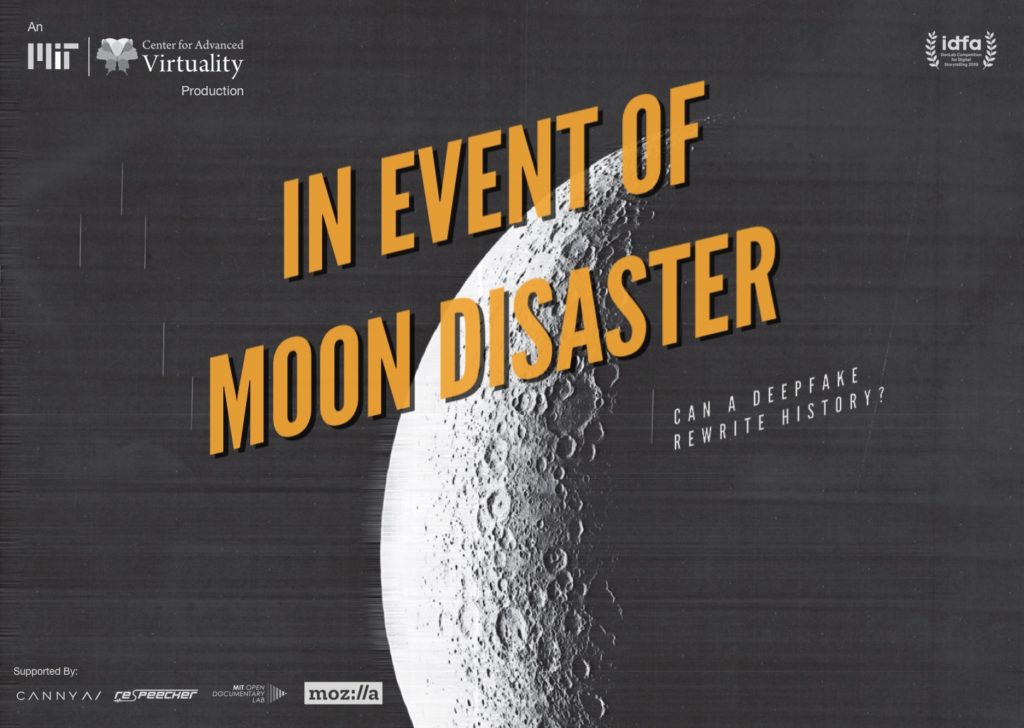Fifty years ago the Apollo 11 landing was a success, and Neil Armstrong took that giant leap for mankind on the surface of the moon. But if they had failed, then-President Richard Nixon had an elegy for the astronauts, written by his speechwriter William Safire, at the ready.
A new art project, In Event of Moon Disaster, by MIT’s Center for Advanced Virtuality supposes that Apollo crashed into the moon, using “deepfake” technology to create an alternate universe in which Nixon actually gives the somber speech. Visitors to International Documentary Film Festival Amsterdam (IDFA) last Friday were able to step into a replica 1960s-era living room, read a fake newspaper, and watch a simulated video of Nixon addressing the American people in the wake of this tragedy that never was.

“The idea was to take the current technology that exists and do as good a job as possible to make something that was very plausible, and do everything we can to make it as real as possible and create all sorts of context….and then point to it and say, ‘Hey, this is not real,’” explains Halsey Burgund, a fellow in the MIT Open Documentary Lab.
Burgund, along with MIT’s new XR Creative Director Francesca Panetta, directed the video, working with Israeli company Canny AI and Ukrainian firm Respeecher to create the vocal effects. They sat with their actor, Louis D. Wheeler, in a studio and recorded him speaking and acting like Nixon for days before handing the recordings off to the deepfake experts. “We had some source material,” says Panetta. “In this case, we used the resignation speech of Richard Nixon.”
The video itself is believable, which is more than a bit scary. The artists go to great lengths to point out what they’ve done, so people are aware, and perhaps allow them to not be fooled by the deepfakes that will certainly be used for nefarious purposes in the future. But, says Panetta, the fundamental goal of deepfakes–to spread disinformation–has been around far longer than this specific technology.
“The idea is not to be sensationalist about it, and to show that it’s one of the latest techniques of misinformation, but that misinformation and fake news is not a new thing,” she says. “We go to pains to point out all of the various techniques we’ve used in our films–some incredibly traditional, things like speeding up film, reversing film, and very carefully selecting which bits you use to tell a story. These are highly effective, and can be done by almost anyone with a laptop and phone. And so the idea is to give an awareness of what is possible and what those techniques are.”

Halsey Burgund and Francesca Panetta recording actor Louis D. Wheeler as he mimics Nixon’s voice patterns.
And both Burgund and Panetta are quick to point out that the Nixon artwork attempts to eschew politics in favor of a neutral learning experience. “We were thinking about the anniversary of the moon [landing],” Panetta says, “and we were thinking about the idea of rewriting history and historical truths.”








